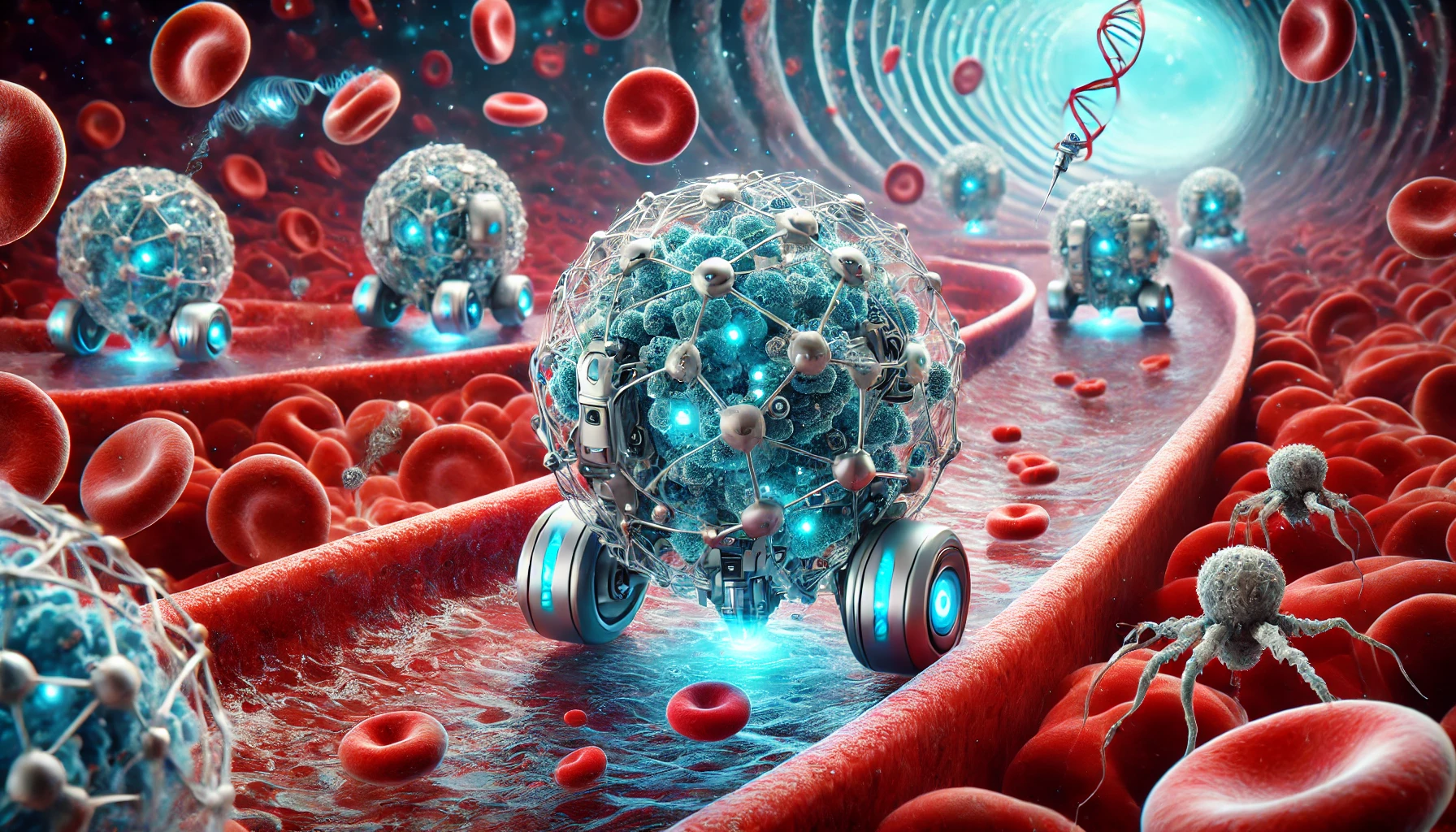Nanomedicine Breakthrough: How Nanobots Are Revolutionizing Cancer Therapy with Precision Drug Delivery and Bringing the Future to Oncology

Tiny Machines, Big Impact: Nanobots Enter the Battle Against Cancer
Cancer treatment has come a long way from the days when the best option was to throw everything at it and hope for the best—like a chef blindly seasoning a soup. Chemotherapy, while effective, is often a bit of a blunt instrument, indiscriminately attacking both healthy and cancerous cells alike. But fear not, because science has a new superhero: nanobots! These tiny machines, smaller than a human cell, are now leading the charge in targeted drug delivery, ushering in a whole new era for cancer treatment. By using nanobots, researchers can send medication directly to the cancer cells, making chemotherapy feel more like a precision airstrike than a carpet bombing. How cool is that?
Nanobots: The Science Fiction Dream Coming to Life
Now, when you think of nanobots, you might imagine tiny robots zooming around in your bloodstream, complete with mini capes, saving the day. While that’s not entirely accurate (alas, no capes), it’s not too far off from the truth. Nanobots are engineered particles designed to navigate the human body with incredible precision. They can be programmed to find specific cells—like cancerous ones—and deliver drugs directly to them. This means higher doses of medicine can be delivered right where they’re needed without harming surrounding healthy tissues. Think of it as sending a pizza directly to the door instead of just throwing it into the house through an open window. Less mess, more impact!
Recent Breakthroughs: Nanobots in Action
So, what’s the latest buzz in the world of nanomedicine? Well, a few exciting advances have put nanobots at the forefront of cancer therapy. One of the most promising developments is the use of DNA origami nanobots, which—despite sounding like something you’d do at a craft fair—are actually revolutionary. These nanobots are made from folded DNA, designed to carry drug molecules and release them only when they come into contact with cancer cells. They work like a Trojan horse, sneaking past the body's defenses to deliver a knockout punch exactly where it’s needed. A study published in Nature Biotechnology showed that these nanobots were able to reduce tumors in mice by targeting cancerous cells without damaging healthy tissues. And the good news doesn’t stop there—researchers are already looking into human trials! This marks a significant step forward in nanobot-driven therapies, potentially changing how we think about cancer treatment altogether.
Targeted Drug Delivery: Why Nanobots Are Game Changers
Traditional chemotherapy treatments are notorious for their side effects. Nausea, hair loss, and weakened immune systems are just a few of the lovely gifts chemo leaves behind. But nanobots, in their precision, might be able to change that. By honing in on cancer cells, nanobots reduce the amount of collateral damage, leaving healthy cells untouched. It’s like a game of 'Operation'—only instead of nervously trying to remove a plastic bone without setting off a buzzer, these bots zero in on the real target without causing chaos elsewhere. One area where this technology is already making waves is in breast cancer treatment. Researchers are exploring ways to use nanobots to deliver doxorubicin, a powerful chemotherapy drug, directly to breast cancer cells. This could result in fewer side effects, faster recovery times, and better patient outcomes overall. The potential for this technology is so vast that experts predict it could become a standard part of cancer treatment within the next decade.
The Challenges Ahead: Navigating Uncharted Territory
Of course, like any new technology, nanobots aren't without their challenges. One major concern is how to control them once they’re inside the body. After all, you can’t exactly grab a remote and steer these little guys around. Scientists are working on creating nanobots that can be directed by external stimuli, such as magnets or ultrasound waves. Another challenge is ensuring that these bots don’t get lost or trigger unintended immune responses. While the progress so far has been promising, there’s still a long road ahead before nanobots become mainstream cancer warriors.
The Future of Nanomedicine: Will Nanobots Cure Cancer?
While it’s too early to declare nanobots the ultimate cure for cancer, their role in revolutionizing oncology is undeniable. The potential to minimize side effects and increase the efficacy of treatments is game-changing. As nanobots continue to evolve, we might see them not only treating cancer but also preventing it by detecting rogue cells before they even become a threat. Imagine a world where a routine check-up includes a swarm of nanobots scanning your body for any signs of trouble. It sounds like sci-fi, but the future of medicine is closer than we think.
Conclusion: The Dawn of the Nanobot Revolution in Cancer Therapy
The future of cancer treatment could very well rest in the hands—or rather, in the circuits—of nanobots. Their precision, efficiency, and ability to target cancer cells without wreaking havoc on the rest of the body make them a promising weapon in the fight against one of humanity's deadliest diseases. With ongoing research and rapid advancements, it’s only a matter of time before these tiny robots become a regular feature in hospitals worldwide. So, what do you think? Are nanobots the future of cancer treatment, or is there still too much we don’t know? Would you trust a tiny robot with your health? Let us know in the comments—or share this article with your friends to get the conversation started!



